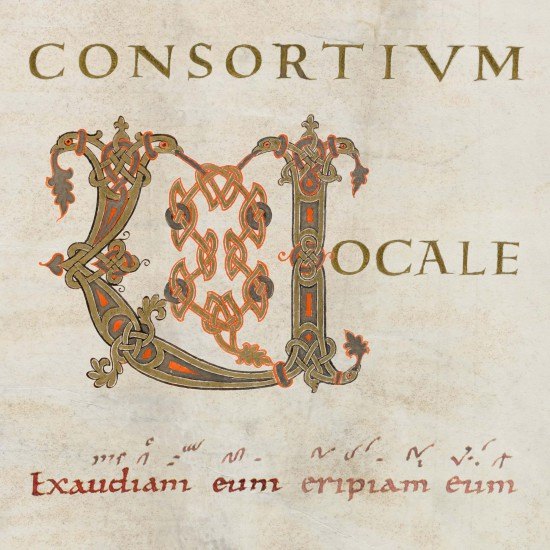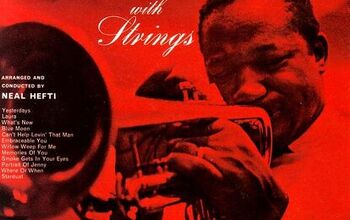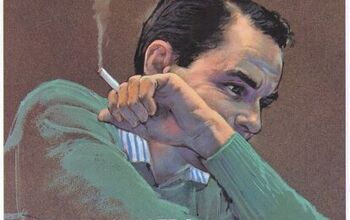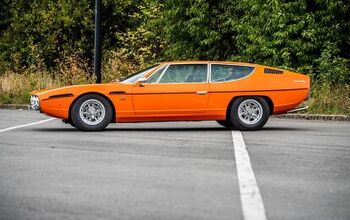Grand Touring Music, Part 3
Our imaginary road trip with great music (see Part 1 here and Part 2 here) continues with music usually thought of as “classical.”
Chant. Ya gotta luvvit. Western music started there.
The composers of the early Classical style (Haydn, Mozart, and others) wrote “symphonies” as a set of separate but (usually) thematically related pieces of music called “movements.” In doing so, they were only following the pattern that had been set centuries before, when composers would write vocal-only or accompanied settings for the Catholic Mass as a series of pieces connected by their being based on the same musical theme.
While the Renaissance use of multiple vocal or instrumental parts for sacred music was a revolutionary development (compared to the all-voices-on-the-same-note model of chant), the result was often evolutionary, in that the thematic material often was a borrowed chant melody. During the 19th century—and even today—certain ancient chant fragments (such as the Dies Irae—Day of Wrath—motif) were quoted in newly composed music.
The otherworldly, organic simplicity of chant provides a much-needed respite from the hurry, noise, and chaos of modern life. The 10th century is not a bad place to visit—as long as you can get back. The recommended recording is so realistic that you can almost smell the incense.
Sound samples and downloads here.
Buy the physical disc here.
7. Glenn Gould: J.S. Bach: The Goldberg Variations
J.S. Bach wrote music to glorify God by illuminating the workings of the cosmos. Bach’s greatest works encompass the entire universe (or at least, the entire human experience) in music for one violinist, one cellist, or one keyboard player.
Even more so than Beethoven’s (to my mind, somewhat over-rated) Fifth Symphony, I think that one indispensible (and perhaps the indispensible) work of Western music a person must be aware of in order not to lack “cultural literacy in music” is J.S. Bach’s “Aria with Diverse Variations,” popularly known as the Goldberg Variations. Johann Gottlieb Goldberg may have been the first performer, but that is the subject of dispute. Neither Goldberg’s name nor that of his supposed patron Count Kaiserling appears on the title page of the sheet music published during Bach’s lifetime, in 1741.
Pianist Glenn Gould commercially recorded the Variations twice. His 1955 version fell like a thunderclap upon the musical world because of the precision and freshness of his articulation. In 1981, the mature Gould recorded his reconsideration, which is slower and is less concerned with vertical structure than with horizontal flow. Either or both are essential to any serious record collection. Note: Gould could not stop humming along with the music, even in a recording session. Just get used to it.
Listen to the complete 1981 version here.
Buy a set of both versions here.
8: David Oistrakh: Mozart Sinfonia Concertante
It’s rather hard to fathom that only 25 years separate the death of J.S. Bach (1750) from the time Mozart hit his stride as a composer (1775). Mozart wanted to move people directly and immediately. To do so, he had to invent a new way of writing music. Once that new way had taken the field, there was no turning back.
Dismissing a friend’s compliment, Mozart once said, “Oh, I write music the way cows piss.” Mozart’s music is “natural,” but only in the most sophisticated way imaginable. His double concerto for viola and violin is one of his most luminous works.
Listen to the slow movement here.
Buy it here.
9. The Cypress String Quartet: Beethoven Late Quartets
Beethoven’s symphonies and piano sonatas are among the best known of all classical compositions. However, not only are they painfully over-exposed; many hard-core classical listeners end up concluding that they are ultimately less rewarding than Beethoven’s more intimate chamber works, especially his late string quartets.
One could easily while away an 898-mile road trip by listening to all of Beethoven’s quartets (he wrote more than a dozen), but here I recommend that you dive into the deep end of the pool by obtaining CDs (or hi-res downloads) of his late quartets as played by San Francisco’s Cypress String Quartet. (I recommend Volume 3; if you like that, you can get the earlier two CDs in the series.)
Listen to Op. 127’s first movement on YouTube here.
Sound samples, downloads, and physical-disc orders here.
10. Tracy Silverman: John Adams The Dharma at Big Sur
Not all the great music was written 200 years ago. A very unlikely piece that has totally knocked me out is John Adams’ recent concerto for six-string electric violin and orchestra, The Dharma at Big Sur.
Blending elements of Indian music, trance music, and electric-guitar-style virtuosity, The Dharma at Big Sur defies description. Silverman plays the pants off the solo part. So just click below for an audio-only YouTube.
Listen to The Dharma at Big Sur Part 1 here.
Buy it here.
Record producer John Marks is a columnist for Stereophile magazine.
More by John Marks
Latest Car Reviews
Read moreLatest Product Reviews
Read moreRecent Comments
- FreedMike If Dodge were smart - and I don't think they are - they'd spend their money refreshing and reworking the Durango (which I think is entering model year 3,221), versus going down the same "stuff 'em full of motor and give 'em cool new paint options" path. That's the approach they used with the Charger and Challenger, and both those models are dead. The Durango is still a strong product in a strong market; why not keep it fresher?
- Bill Wade I was driving a new Subaru a few weeks ago on I-10 near Tucson and it suddenly decided to slam on the brakes from a tumbleweed blowing across the highway. I just about had a heart attack while it nearly threw my mom through the windshield and dumped our grocery bags all over the place. It seems like a bad idea to me, the tech isn't ready.
- FreedMike I don't get the business case for these plug-in hybrid Jeep off roaders. They're a LOT more expensive (almost fourteen grand for the four-door Wrangler) and still get lousy MPG. They're certainly quick, but the last thing the Wrangler - one of the most obtuse-handling vehicles you can buy - needs is MOOOAAAARRRR POWER. In my neck of the woods, where off-road vehicles are big, the only 4Xe models I see of the wrangler wear fleet (rental) plates. What's the point? Wrangler sales have taken a massive plunge the last few years - why doesn't Jeep focus on affordability and value versus tech that only a very small part of its' buyer base would appreciate?
- Bill Wade I think about my dealer who was clueless about uConnect updates and still can't fix station presets disappearing and the manufacturers want me to trust them and their dealers to address any self driving concerns when they can't fix a simple radio?Right.
- FreedMike I don't think they work very well, so yeah...I'm afraid of them. And as many have pointed out, human drivers tend to be so bad that they are also worthy of being feared; that's true, but if that's the case, why add one more layer of bad drivers into the mix?






































Comments
Join the conversation
Baroque string concerti are mighty fine driving music. I like Vivaldi and Locatelli best. Wish I could find MP3s of the old Vox Box of Susanne Lautenbacher playing L'Arte del Violino.
One last : to be filed under ; Is it is or is it aint [ classical music that is ] I've heard and read compelling arguments on both sides ... including from the composer/performer [ that it aint ... though I may of swayed him otherwise ] Gabriel Kahane "Gabriel Kahane " In my opinion this album is . Classical that is . An American song cycle in the tradition of German lieder . With an occasional node towards Herr Bach . Think the most accessible of Charles Ives vocal music with a touch of pop and you'd be right on the mark . The fact that this California Kid can portray the New England I grew up in and still love [ though not VT ] so well musically never ceases to amaze me . His " North Adams " being the perfect road song while driving on the "Blue Highways" of American . His " Underberg " being an accurate albeit sad commentary as one travels thru the many dying and dead towns on those "Blue Highways" through out the US . Mr Kahane ... though not yet receiving the attention he deserves [ despite his young years ] should be considered an American Treasure ... due in part to his appeal across a wide range of audience ... from Classical to Hipster .... along with his talents both musical and lyrical . The kid comes from a fine set of musical genes as well . The old man being a master/maestro .. with the son being a genius Check out his " CraigsList Lieder " on YouTube and on his site . Musically and lyrically it is a gem . Ecco . Va bene . Basta !